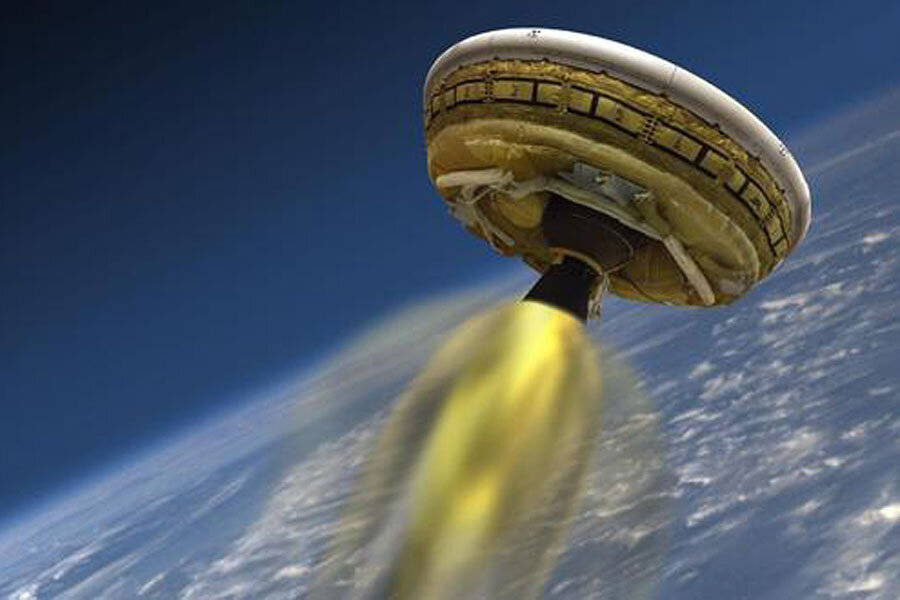NASA wants you to check out its flying saucer
Sen—NASA is inviting the public to watch the next test flight of its innovative flying saucer-shaped vehicle designed to land heavy payloads on Mars.
The vehicle, officially known as the Low Density Supersonic Decelerator (LDSD), measures 4.5 metres (15 feet) wide and weighs over three tons. Its innovative two-part braking system comprises a doughnut-shaped inflatable braking shield and a gigantic parachute.
The inflatable brake shield, called the supersonic inflatable aerodynamic decelerator (SIAD-R), is designed to unfold and inflate to increase a spacecraft’s size and atmospheric drag.
After slowing down under the brake shield, the vehicle is designed to deploy the 33.5-metre wide Supersonic Ring Sail Parachute, the largest parachute ever flown.
The technology is not only being designed to enable heavy payloads to land on the surface of Mars, but also to allow landings at higher-altitude sites, giving access to much more of the planet's surface.
Up to now, the one ton Curiosity rover has been the heaviest craft to land on Mars, employing a complex landing system including a supersonic parachute and a "sky crane" which lowered the rover onto the Martian surface. Current Mars landing techniques date back to NASA's Viking mission, which put twin landers on Mars in 1976.
NASA is planning to land even bigger payloads, including vehicles, cargo, crew and human habitats. The agency is therefore developing the technology for a landing system which can place payloads of up to 40,000 kg on the surface of Mars, or other celestial bodies.
NASA is looking to use atmospheric drag as a solution, in a bid to save rocket engines and fuel. Such payloads will require much larger drag devices to slow them down and those devices will need to be deployed at higher supersonic speeds to land safely.
The LDSD had its first test flight in June 2014 when its was dropped from under a large helium balloon at 120,000 ft. The vehicle then fired its rocket motor, propelling it to 180,000 ft at a speed of Mach 4. During descent the vehicle's inflatable doughnut-shaped braking shield succeeded in slowing down the craft, but the second part of the landing system—the enormous parachute—failed to open properly, causing the vehicle to crash land in the Ocean.
The next test flight is to be streamed live on March 31, from 1600 to 1700 UTC (9 am to 10 am PDT).
During the hour-long interactive broadcast, LDSD team members will be available to answer questions from the public, while LDSD will undergo a "spin-table" test in preparation for shipment to Hawaii, where it will be flown into near-space from the Navy's Pacific Missile Range Facility on the island of Kauai in June.
Testing will continue through 2015, with potential launch to Mars as early as 2020.
Related Links:
Original story from Sen. © 2015 Sen TV Limited. All rights reserved. This material may not be published, broadcast, rewritten or redistributed. For more space news visit Sen.com and follow @sen on Twitter.






